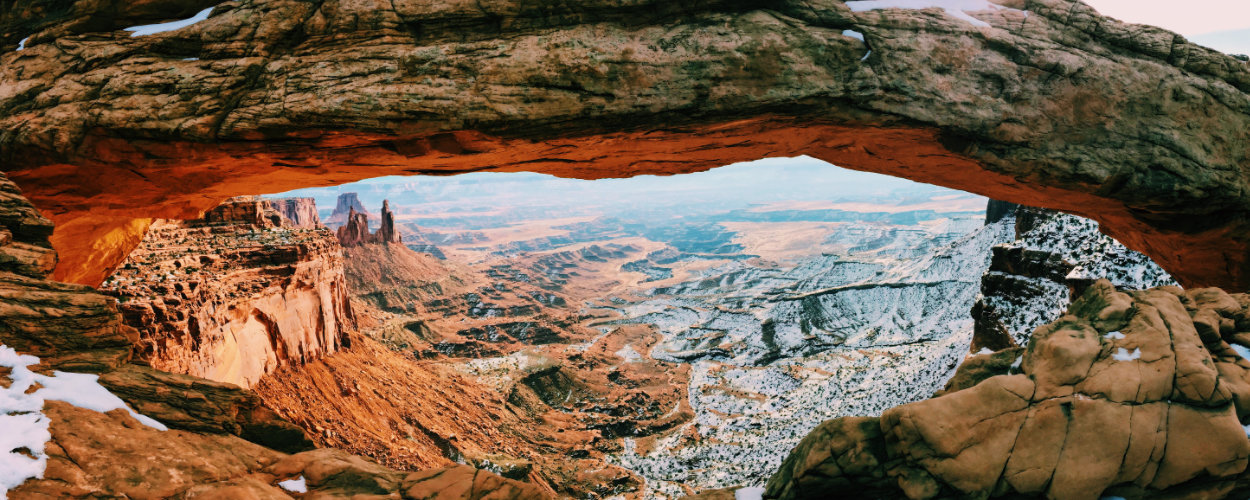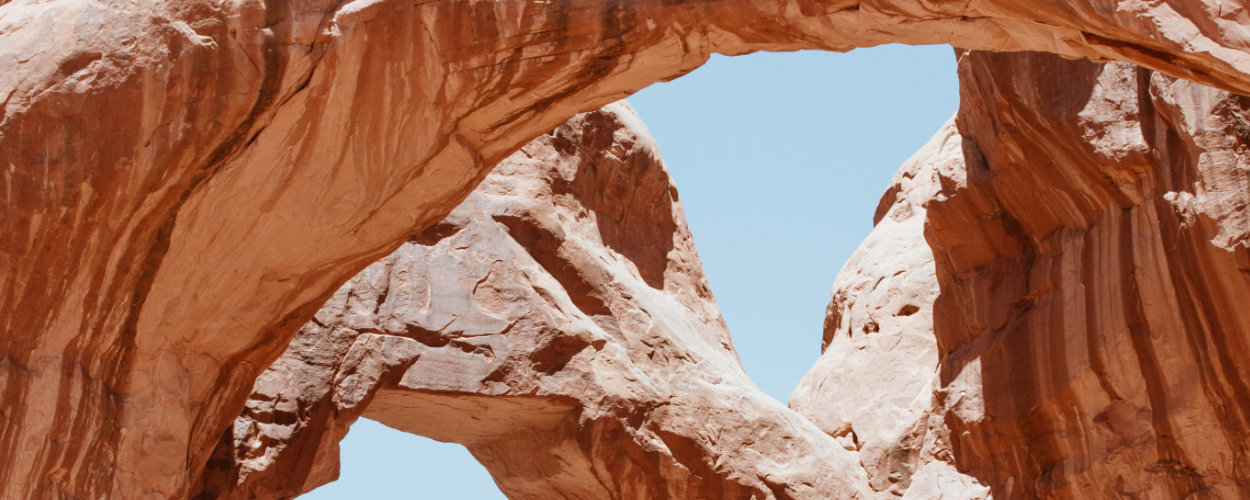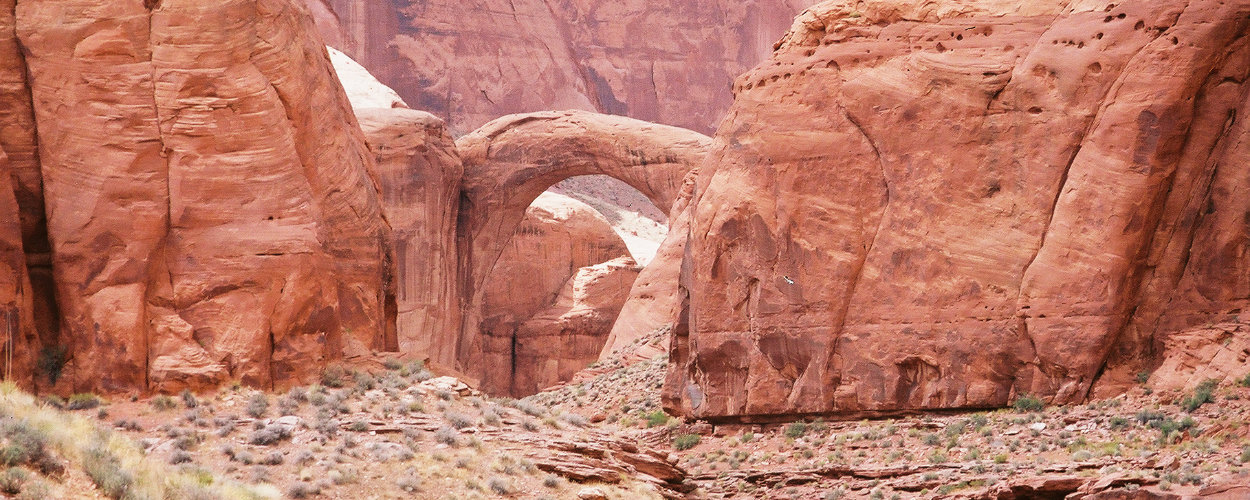Natural Curiosity
If you’re anything like us, then you’ve wondered how natural arches and bridges are formed. These amazing geological formations dot the landscape here in Southern Utah. You can see them in all five of our national parks, and in lots of other state parks and national monuments. Sometimes natural arches look so bizarre that it’s hard to fathom how natural forces shaped them.

Mesa Arch in Canyonlands National Park. By Francois Olwage via Unsplash.com
The Generally Accepted Theory
Most people understand that erosion plays an important role in creating arches and bridges. There are two types of erosive forces that account for most arches and bridges – weather erosion and water erosion.
If a crack forms in the soft layers of a sandstone fin, it allows wind to penetrate into the rock. In the desert, winds are common, and they carry lots of sand – kind of like a natural sandblaster – this can cause the cracks to widen. Acidic rain can accumulate in these cracks, chemically weakening the rock. Then, freezing and thawing frosts can cause fractured sections of rock to break off. With enough time, the constant cycle of wind, ice and rain will form an arch. This is weather erosion, and most arches and bridges throughout the world were formed this way.
Water erosion relies, as the name suggests, almost entirely on running water to create arches and bridges. Streams and rivers may eventually cut through a fin of sandstone (this is how Rainbow Bridge was formed) or acidic rain-water might pool in depressions and create an arch from above (Double Arch in Arches National Park is the perfect example of this).

Double Arch in Arches National Park. By Lauren Pandolfi via Unsplash.com
Squashed Stones
Recently, some scientists have questioned the erosion model, saying that it doesn’t explain arch formations well enough. An article in Nature Geoscience written by geologist Jiří Bruthans and his colleagues from Charles University in Prague suggest that rocks are effectively strengthened by increased downward force. So as the arch starts to form via weather erosion, the pillars of sandstone that hold the top of the arch in place become more and more compressed. This results in stronger pillars, which are more resistant to sand-laden winds, and acidic rain. Meaning that erosive forces will naturally remove the weaker, central portions of rock, until all that remains are the pillars. And presto! you have a natural arch or bridge.
More to Discover
There’s still plenty that we don’t know about how arches and bridges are formed. But geologists are making headway. New research comes along every few years that makes our models more complete. We at the Lodge think this is pretty cool stuff, so when we learn anything new, we’ll keep you updated. In the meantime…

Rainbow Bridge in Rainbow Bridge National Monument. By Gonzo fan2007 via Wikimedia Commons.
See the Wonder
If you’re visiting Southern Utah, you’ve got to check out some of our famous natural arches and bridges. Here are the four spots that we recommend the most:
Arches National Park – this is the obvious one, since it’s the largest concentration of arches in the state (2,000 of them, in fact). Don’t miss Delicate Arch, Double Arch and Landscape Arch.
Canyonlands National Park – it’s right next to Arches, so you don’t have any excuse not to stop by and check out Mesa Arch.
Natural Bridges National Monument – three of the coolest, and largest natural bridges in the United States, all within easy walking distance of each other.
Rainbow Bridge National Monument – considered the tallest natural arch in the world, Rainbow Arch is well worth the effort to see in person. Plan on taking a boat from Lake Powell and hiking the rest of the way.

